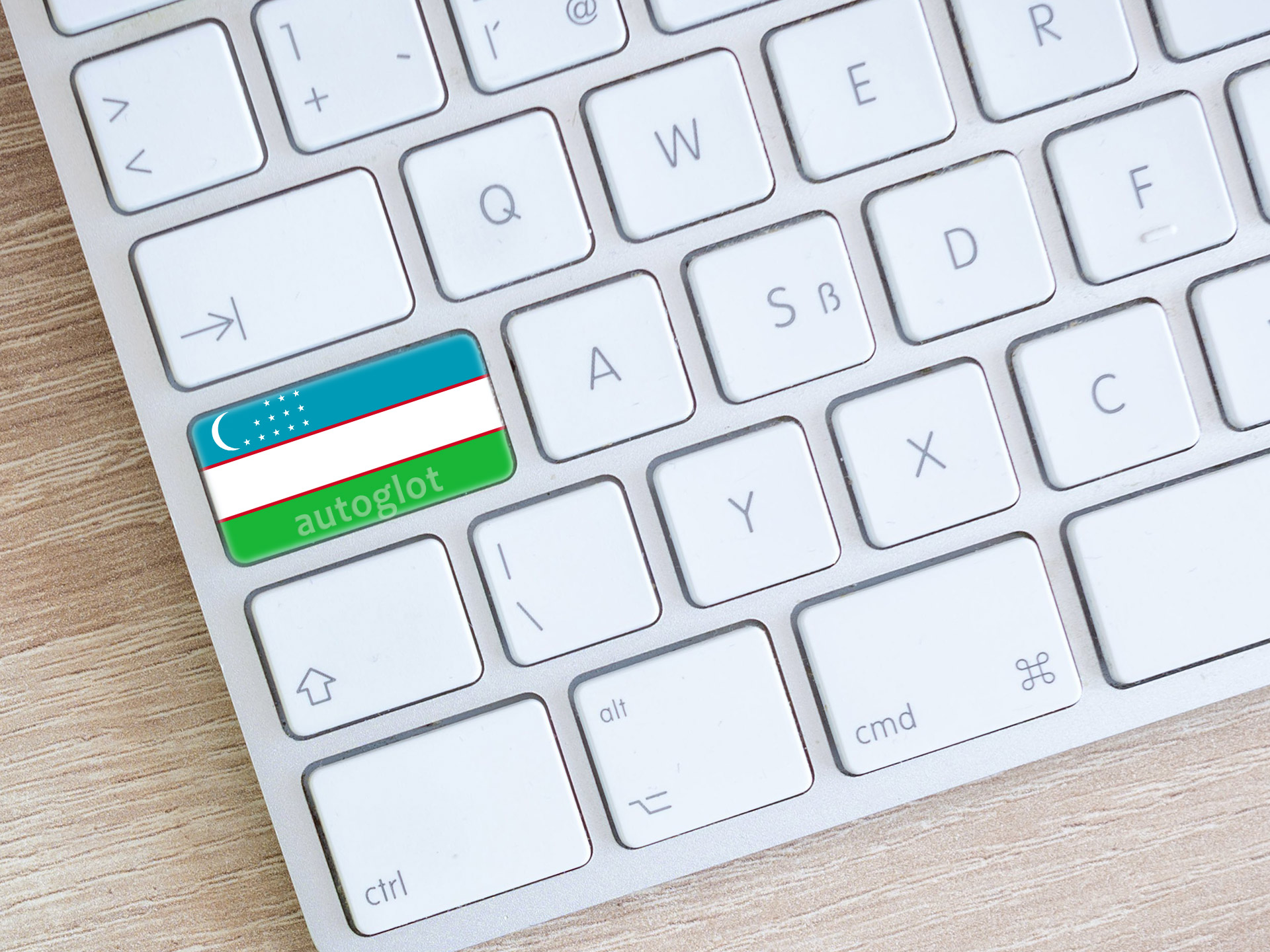
Multilingual websites offer a strategic advantage by expanding your reach across different linguistic groups. They help businesses connect with a broader audience, enhance user experience, and increase engagement.
By translating your website into Uzbek language, you enter a significant market in Central Asia, broaden the audience and boost your ROI.
See also: How To Measure Translation ROI?
Introduction: Benefits of Multilingual Websites
By providing content in multiple languages, companies can address diverse user needs and preferences.
- Improved User Experience: Users are more comfortable navigating a site in their native language, leading to longer visits and reduced bounce rates.
- Increased Traffic and Engagement: Multilingual sites attract visitors from various regions, boosting traffic and interaction.
- Higher Conversion Rates: Offering content in multiple languages can lead to higher conversion rates, as users are more likely to engage with content they understand.
Importance of Translation to Uzbek
Translating your website into Uzbek is particularly valuable for tapping into the Uzbek-speaking market. Uzbekistan, with its growing digital presence, represents a significant audience that is often underserved by global websites. Providing content in Uzbek can help build trust and loyalty among local users.
- Market Expansion: Uzbek is spoken by over 35 million people, primarily in Uzbekistan and surrounding regions.
- Cultural Relevance: Localizing your content for Uzbek speakers demonstrates respect for their language and culture, which can enhance brand reputation.
- Increased Visibility: A website available in Uzbek can improve search engine rankings and visibility among users searching in this language.
Overall, translating your website into Uzbek not only opens up new market opportunities but also improves user experience and engagement. By addressing the linguistic needs of this growing audience, you can better position your business in a competitive global landscape.
Uzbek Language
Basic Information about Uzbek Language
Uzbek is a Turkic language spoken primarily in Uzbekistan. It belongs to the larger Altaic language family, which includes other Turkic, Mongolic, and Tungusic languages. Uzbek is the official language of Uzbekistan and is used in government, education, and media.

Alphabet and Script
Uzbek uses a modified Latin alphabet, which was adopted in 1993, replacing the Cyrillic script previously used during the Soviet era. The Latin script makes it easier for speakers of other languages to learn and use Uzbek.
History of Uzbek Language
The Uzbek language has a rich history that reflects its diverse cultural influences. It has evolved over centuries, absorbing elements from Persian, Arabic, and Russian due to historical interactions. This historical development has shaped the modern Uzbek language, which combines Turkic roots with influences from these languages.
- Turkic Origins: Uzbek originates from the Turkic language group, with roots in the languages spoken by the nomadic tribes of Central Asia.
- Influence of Persian and Arabic: During the medieval period, Persian and Arabic had significant impacts on Uzbek vocabulary and literary traditions.
- Soviet Era: Under Soviet rule, Uzbek adopted Cyrillic script and incorporated Russian loanwords, which continue to influence the language today.
Structure, Vocabulary, and Grammar of Uzbek
Uzbek grammar is relatively straightforward compared to some other Turkic languages. It uses a subject-object-verb (SOV) word order, and its structure is agglutinative, meaning that suffixes are added to words to express grammatical relationships.
- Vocabulary: Uzbek vocabulary includes a mix of Turkic roots, Persian and Arabic loanwords, and some Russian influence. This blend gives the language a unique lexicon compared to other Turkic languages.
- Grammar: Uzbek uses suffixes to indicate tense, case, and mood. For example, noun cases are marked by specific suffixes, and verb conjugations are relatively simple compared to other languages.
- Pronunciation: The pronunciation of Uzbek is generally phonetic, meaning it is pronounced as it is written, which can make it easier to learn for non-native speakers.
Overall, the Uzbek language offers a fascinating blend of historical and cultural elements. Its rich vocabulary and straightforward grammar structure make it accessible to learners, while its history reflects the diverse influences that have shaped the language over time.
Uzbek-speaking People
Population that Speaks Uzbek
Uzbek is spoken by approximately 35 million people worldwide. The majority of these speakers are located in Uzbekistan, where Uzbek is the official and most widely spoken language.

Additionally, there are significant Uzbek-speaking communities in neighboring countries and among diaspora populations.
- Uzbekistan: The largest concentration of Uzbek speakers is in Uzbekistan, where the language serves as the primary means of communication in daily life, education, and government.
- Neighboring Countries: There are notable Uzbek-speaking populations in countries such as Kyrgyzstan, Kazakhstan, and Tajikistan, where Uzbek communities live in substantial numbers.
- Diaspora: Uzbek-speaking diaspora communities can be found in Russia, the United States, and various European countries, where they maintain their linguistic and cultural heritage.
Uzbek-speaking Countries
Uzbek is the official language of Uzbekistan, where it is used in all facets of public and private life. The language holds a central role in education, government, and media within the country.
- Uzbekistan: As the only country where Uzbek is an official language, Uzbekistan’s national identity and cultural expression are deeply tied to the language.
- Influence in Neighboring Regions: In countries like Kyrgyzstan and Kazakhstan, while Uzbek is not the official language, it is spoken by significant numbers of people and influences regional culture and trade.
Countries Where People Speak Uzbek
In addition to Uzbekistan, Uzbek is spoken by communities in several other countries. These regions have notable Uzbek-speaking populations that contribute to the language’s global presence.
- Kyrgyzstan: Uzbek is spoken by a considerable minority in Kyrgyzstan, particularly in the southern regions of the country.
- Kazakhstan: Uzbek-speaking communities exist in Kazakhstan, where they form part of the country’s diverse linguistic landscape.
- Tajikistan: There are also Uzbek-speaking groups in Tajikistan, particularly in areas close to the Uzbek border.
Understanding the distribution of Uzbek speakers helps in recognizing the language’s regional significance and the potential benefits of reaching these audiences. By translating content into Uzbek, businesses and organizations can engage with these communities more effectively and expand their reach in Central Asia and beyond.
5 Reasons a Multi-Language Website is Beneficial for your Business
Uzbek on the Internet
How Widespread Uzbek is on the Internet
Uzbek is increasingly becoming visible on the internet as digital resources and content expand. The growing online presence reflects the rising number of Uzbek speakers who are engaging with digital media.

- Websites and Online Content: Many websites are beginning to include Uzbek language options to cater to the increasing number of Uzbek-speaking internet users. This includes news sites, educational platforms, and e-commerce sites.
- Social Media: Uzbek users are active on various social media platforms, where they engage in discussions, share content, and connect with others in their language. Social media also serves as a platform for businesses to reach out to Uzbek-speaking audiences.
- Digital Resources: The availability of online resources in Uzbek, such as language learning tools, blogs, and entertainment, contributes to the language’s growing digital footprint.
Importance of Having an Uzbek Version of Your Website
Having a Uzbek version of your website is crucial for effectively reaching and engaging with the Uzbek-speaking population. It ensures that your content is accessible to a significant and often underserved market segment.
- Enhanced User Experience: A website in Uzbek provides a more comfortable and user-friendly experience for native speakers, increasing the likelihood of site engagement and user satisfaction.
- Broader Market Reach: Offering your site in Uzbek allows you to tap into a growing digital market in Uzbekistan and surrounding regions, expanding your audience base.
- Competitive Advantage: Providing content in Uzbek can set you apart from competitors who may not offer language options, potentially giving you an edge in the market.
The importance of including Uzbek on your website extends to improving search engine optimization (SEO) and visibility. When users search for information in their native language, they are more likely to find and interact with websites that provide content in Uzbek. This can lead to higher search rankings and greater visibility among Uzbek-speaking users.
Overall, having an Uzbek version of your website is not just a matter of accessibility but also a strategic move that can enhance user engagement, expand market reach, and improve your site’s visibility. As the digital landscape continues to grow, catering to the Uzbek-speaking audience becomes increasingly important for maintaining a competitive edge and building stronger connections with this community.
Read more: How To Launch a Successful Multilingual Business Online?
How to Translate a WordPress Site to Uzbek
Major Ways of Translating WordPress Sites to Uzbek
There are several methods for translating a WordPress site into Uzbek, each with its own advantages and challenges. These methods can range from manual translation to using automated tools, depending on your needs and resources.

- Manual Translation: This approach involves translating the content yourself or hiring professional translators. While it ensures high accuracy and cultural relevance, it can be time-consuming and costly.
- Translation Plugins: WordPress offers various plugins that can assist with translating your site. These plugins often allow for manual input as well as integration with translation services.
- Automated Translation Tools: Automated tools use machine translation to quickly translate content into multiple languages. This method is generally faster and more cost-effective but may require additional editing to ensure accuracy and readability.
Autoglot WordPress Translation Plugin
Autoglot is an excellent tool for translating your WordPress site into Uzbek efficiently and accurately. This plugin leverages advanced machine translation techniques to provide automated translations, making it a convenient option for site owners who want to offer content in multiple languages without extensive manual effort.
- Full Automation: Autoglot automates the translation process, reducing the need for manual input and oversight. This feature allows you to quickly translate your site into Uzbek with minimal effort.
- SEO Compatibility: The plugin ensures that translated content remains SEO-friendly, helping maintain search engine rankings and visibility across different languages.
- Cost-Effectiveness: Autoglot offers a pay-as-you-go pricing model, meaning you only pay for the content that is actually translated. This can result in lower and more predictable costs compared to other translation methods.
Using Autoglot to translate your WordPress site to Uzbek offers a streamlined and efficient solution. It allows you to reach the Uzbek-speaking audience without the need for extensive manual translation processes or high costs associated with professional services.
Overall, Autoglot provides a practical and effective way to make your WordPress site accessible to Uzbek speakers, combining automation with SEO benefits to enhance your site’s global reach and user engagement.
Read more: How to Translate WordPress Blog
Step-by-Step Guide to Translating a WordPress Site to Uzbek
Step 1. Plugin Installation and Activation
To start translating your WordPress site to Uzbek using the Autoglot plugin, first install and activate the plugin. Begin by logging into your WordPress dashboard and navigating to the “Plugins” section.
- Search for Autoglot: In the search bar, type “Autoglot” to find the plugin. Click “Install Now” and then “Activate” once the installation is complete.
- Access Plugin Settings: After activation, go to the “Settings” menu and select “Autoglot” to configure the plugin.
You may also download Autoglot directly from the official WordPress plugins repository.
Official Autoglot WordPress Repository
Step 2. Registration in Autoglot Control Panel
Next, you need to register and set up your Autoglot account in the control panel. If you don’t already have an account, you will be prompted to create one during the setup process.
- Create an Account: Follow the on-screen instructions to sign up for an Autoglot account. Provide necessary details and complete the registration.
- Log In: Once registered, log in to the Autoglot Control Panel using your credentials. This is where you can receive your free API key that will link your WordPress to your Autoglot account.
Autoglot Control Panel lets you control your translation expenses, track usage and order new translation packages.
Autoglot Control Panel
Step 3. Plugin Configuration
With the Autoglot plugin activated and your account set up, proceed to configure the plugin for your website. In the Autoglot settings menu, you’ll need to adjust various options to suit your translation needs.
- Link Your API Key: Use your free API key to link your WordPress installation with your Autoglot account.
- Configure Language Switcher: Choose the appearance of language switcher. This may be a popup box, a shortcode, or a widget with either language names, flags, or both.
- Adjust Settings: Configure additional settings according to your preferences. This may include translation preferences, image and links replacement filters, etc.
Language switcher can be a great visual tool that lets your visitors quickly change website language.
How to Add and Customize a WordPress Language Switcher?
Step 4. Choosing Uzbek Among Languages
Ensure that Uzbek is selected as one of the languages for translation in your Autoglot settings. This step is crucial to make sure your content is translated into Uzbek.
- Verify Language Options: Check the list of available languages and confirm that Uzbek is included. If it is not available, you may need to refresh or update the plugin.
- Save Changes: After selecting Uzbek, save your changes to apply the settings.
Step 5. Checking the Results of Automatic Translation
Finally, review the results of the automatic translation to ensure accuracy and quality. Once the translation process is complete, visit your website to check the Uzbek version of your content.
- Review Translated Content: Navigate through different pages and posts to ensure that the translation is accurate and contextually appropriate.
- Make Adjustments: If needed, make manual adjustments or contact Autoglot support for assistance with any issues.
The Autoglot plugin allows you to manually edit the translations directly within the WordPress editor.
How To Edit Translation in WordPress?
Using Autoglot to translate your WordPress site into Uzbek streamlines the process and ensures that your content is accessible to Uzbek-speaking users. By following these steps, you can effectively expand your website’s reach and improve engagement with a new audience.
Conclusion
Challenges and Benefits of Translating WordPress Sites to Uzbek
Translating a WordPress site to Uzbek presents both challenges and benefits. On the one hand, you may face issues such as ensuring translation accuracy and maintaining the quality of localized content.
- Translation Accuracy: Automated translations might not always capture nuances or context correctly, which can affect user experience.
- Quality Maintenance: Keeping the translated content consistent with the original can be challenging, especially if your site frequently updates its content.
Despite these challenges, translating your site into Uzbek offers significant advantages. It allows you to reach a broader audience and engage more effectively with Uzbek-speaking users.
- Increased Reach: By providing content in Uzbek, you tap into a large and growing market, enhancing your site’s visibility and appeal.
- Improved Engagement: Users are more likely to interact with and trust a website that offers content in their native language.
Summary
To overcome these challenges and reap the benefits of translating your WordPress site into Uzbek, consider using the Autoglot WordPress translation plugin. Autoglot simplifies the translation process through its automated features, ensuring that your content is accurately and efficiently translated.
- Ease of Use: With Autoglot, you can easily manage and update translations without extensive manual effort.
- Cost-Effective Solution: Autoglot’s pay-as-you-go model provides a cost-effective way to translate your site, paying only for the content translated.
Overall, Autoglot offers a powerful tool for making your WordPress site accessible to Uzbek-speaking users, helping you expand your reach and improve engagement.
By leveraging the capabilities of Autoglot, you can effectively address the linguistic needs of your audience and enhance your site’s global presence.



